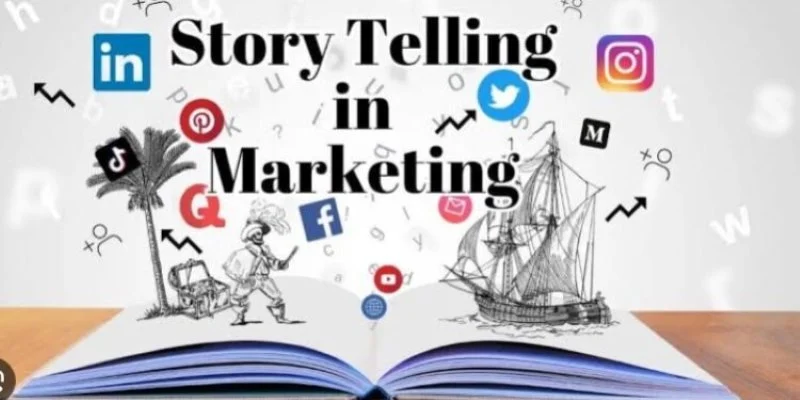
Storytelling is an ancient and powerful tool that has been used for centuries to create connections and build loyalty. In the world of business, mastering the art of storytelling can help you engage with your audience on a deeper level. If you want to learn how to effectively connect with your customers through storytelling, At Mister Nguyen Agency, we specialize in website design and business solutions that help you attract and retain customers. Let’s craft your brand story together and turn leads into loyal followers!
The Power of Storytelling
Defining Storytelling
Ancient yet timeless, storytelling is a captivating art form that transcends cultures and generations. In the world of business, storytelling serves as a powerful tool to forge connections with customers and establish brand loyalty. By crafting narratives that resonate with the hearts and minds of your audience, storytelling can engage them on a deeper level, inspiring action and fostering lasting relationships.
The Benefits of Storytelling in Business
Storytelling in business offers a myriad of benefits, from building emotional connections with customers to effectively communicating a company’s mission and values. When done right, storytelling has the potential to make customers feel intertwined with your brand, leading to increased loyalty and advocacy. By sharing stories that align with customer values and experiences, businesses can create powerful connections that stand the test of time.
With its ability to evoke emotions, storytelling enables businesses to differentiate themselves, showcase their unique personality, and leave a lasting impression on customers. By leveraging storytelling, businesses can strengthen customer loyalty, drive word-of-mouth recommendations, and ultimately secure a steadfast following for their brand.
Understanding Your Audience
Identifying Your Target Audience
For businesses looking to connect with their audience through storytelling, identifying your target audience is crucial. Assuming you already have an idea of who your potential customers are, take the time to research deeper into their demographics, interests, and behavior patterns. By understanding who they are, you can tailor your stories to resonate with their unique needs and preferences, ultimately creating a stronger connection with your audience.
Understanding Their Values and Experiences
Your audience’s values and experiences play a significant role in how they perceive and engage with your brand. For businesses aiming to enhance brand loyalty through storytelling, it’s crucial to dig into what matters most to your customers. Your stories should reflect their values, aspirations, and challenges to establish a genuine connection. By aligning your narratives with their experiences, you can create a more meaningful impact and foster a lasting relationship with your audience.
Experiences: Dive deep into your audience’s experiences, both in relation to your industry and beyond. By understanding the challenges they face, the victories they celebrate, and the stories that resonate with them, you can craft narratives that truly speak to their hearts and minds. This empathetic approach will not only help you connect on a personal level but also demonstrate your commitment to understanding and supporting your customers.
Crafting Compelling Stories

Creating Dynamic Stories with Sensory Details
All stories, whether ancient tales or modern business narratives, come to life when infused with sensory details that engage the audience’s imagination. Paint vivid pictures with your words, using sensory descriptions to create a sensory experience for your readers. Describe the warmth of the sun on a character’s face, the smell of fresh-baked bread wafting through the air, or the sound of laughter filling a room. By incorporating sensory details, you can transport your audience into the world of your story, making it more memorable and impactful.
Using Captivating Conversation and Interesting Characters
With captivating conversation and interesting characters, you can bring your stories to life in a way that resonates with your audience. Create dialogue that is authentic and engaging, allowing your characters to reveal their personalities and motivations through their words. Develop characters that your audience can connect with, root for, or even relate to. By weaving captivating conversation and interesting characters into your storytelling, you can create a narrative that captures the hearts and minds of your readers, leaving a lasting impression.
Details that stand out: By using captivating conversation and interesting characters, you can create a story that not only entertains but also resonates with your audience on a deeper level. Through authentic dialogue and relatable characters, you can forge a connection that makes your audience feel invested in the story and the message you are conveying. This emotional connection can drive brand loyalty and inspire action, making storytelling an invaluable tool for businesses looking to connect with their customers.
Tailoring Your Story for the Medium
Your storytelling should be tailored for the specific medium you choose to deliver it on. Whether it’s a blog post, video, or presentation, each medium has its own unique characteristics that can enhance the impact of your story. Tailoring your story involves adapting the tone, style, and length to fit the platform and capture the attention of your audience effectively.
When tailoring your story for the medium, consider the best practices for each platform. For example, if you’re creating a video, ensure it is visually engaging and concise to keep viewers interested. If you’re writing a blog post, focus on keeping the content clear and concise, with eye-catching visuals to support your narrative.
Choosing the right platform and tailoring your story for the medium are important steps in delivering your story effectively. By understanding the nuances of each platform and adapting your story accordingly, you can create a more engaging and impactful storytelling experience for your audience.
Building Brand Loyalty through Storytelling

Creating an Emotional Connection with Customers
Brand loyalty is necessary for the success of any business. One powerful way to build brand loyalty is through the art of storytelling. By creating emotional connections with customers through compelling narratives, businesses can inspire lasting loyalty. When customers feel a deep emotional connection with a brand, they are more likely to return for repeat purchases and recommend the business to others.
Increasing Loyalty through Relevant and Relatable Stories
For businesses looking to strengthen brand loyalty, it’s important to tell stories that are relevant and relatable to their target audience. By understanding the values and interests of customers, businesses can create narratives that resonate on a personal level. These stories should evoke emotion, be relatable, and feel genuine. When customers see themselves reflected in a brand’s storytelling, they are more likely to feel a sense of connection and loyalty.
Increasing brand loyalty through storytelling involves crafting narratives that speak directly to the hearts and minds of customers. By sharing stories that customers can relate to, businesses can foster a sense of community and connection, leading to increased loyalty and advocacy.
Offering Exclusive Content to Loyal Customers
Loyalty is a two-way street, and offering exclusive content to loyal customers is a great way to show appreciation and strengthen relationships. By providing loyal customers with special discounts, early access to products, or VIP events, businesses can make these customers feel valued and appreciated. This exclusive content not only rewards loyalty but also incentivizes customers to continue engaging with the brand.
Emotional bonds forged through storytelling can be further deepened by offering exclusive content to loyal customers. By providing unique and valuable benefits to those who have shown commitment to the brand, businesses can solidify loyalty and encourage ongoing support.
Effective Storytelling Techniques
Using Storytelling to Convey Messages and Values
Unlike traditional forms of communication, storytelling allows businesses to convey messages and values in a more engaging and memorable way. By crafting narratives that resonate with their audience, businesses can effectively communicate their mission and beliefs. Through storytelling, businesses can connect with their customers on a deeper level, making it easier for them to understand and remember the brand’s message.
Evoking Emotions and Inspiring Action
On the journey of storytelling, businesses have the power to evoke emotions and inspire action in their audience. Through well-crafted stories that touch the hearts of customers, businesses can create a sense of empathy and connection that motivates individuals to take action. By using storytelling techniques that resonate with the target audience, businesses can inspire customers to engage with the brand on a deeper level, leading to increased loyalty and advocacy.
Inspiring action through storytelling involves creating narratives that not only captivate the audience but also compel them to take the desired action. By leveraging emotions and creating a sense of urgency or excitement, businesses can encourage customers to make a purchase, share their story with others, or engage with the brand in a meaningful way.
Summing up
As a reminder, storytelling in business is a powerful tool that can help you connect with your audience on a deeper level, build brand loyalty, and create lasting relationships. By understanding your audience, creating compelling stories, and delivering them effectively, you can engage customers and inspire action. Through storytelling, businesses can convey their values, build brand reputation, and ultimately foster a sense of trust and loyalty among customers.











